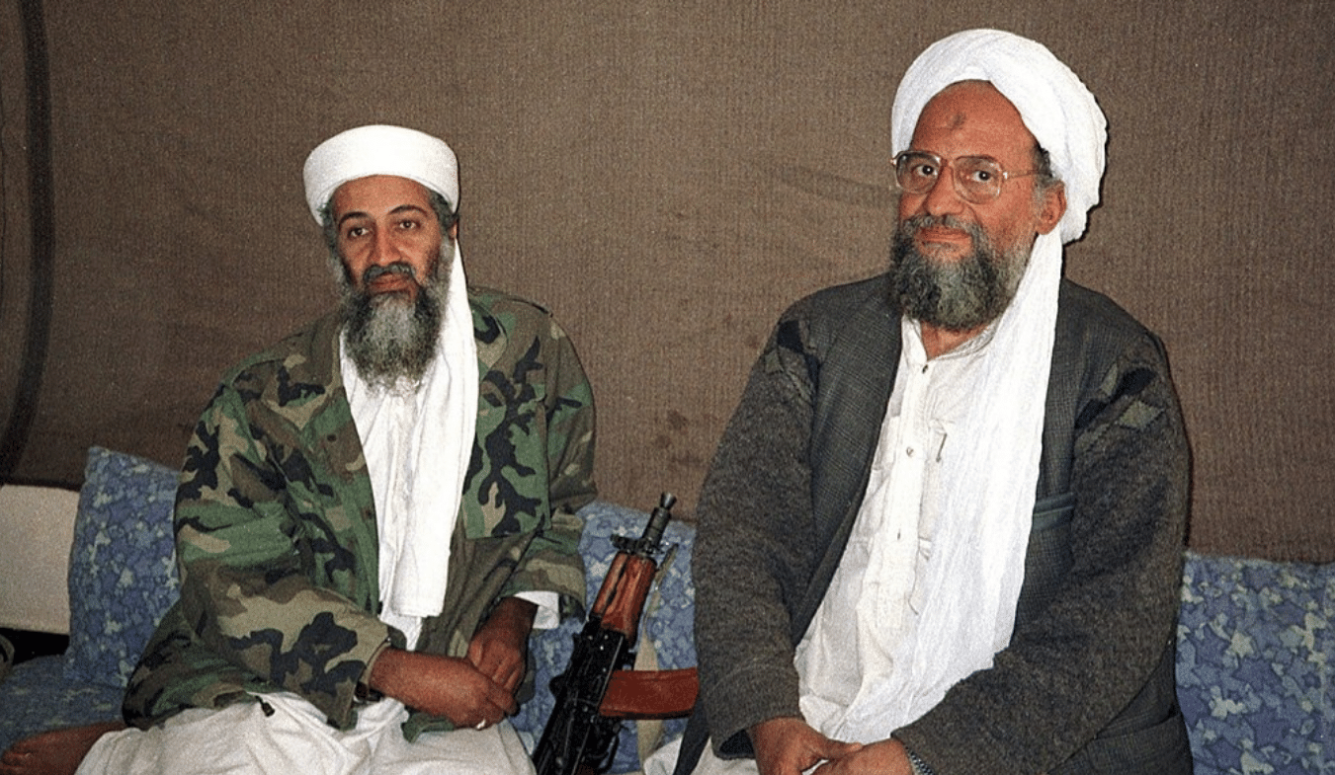
The long and arduous search for Ayman al-Zawahiri finally concluded on Sunday, July 31st, with a US drone strike on his safe-house in Kabul. The elusive al-Qaeda leader was killed using an R9X (nicknamed “the flying Ginsu”), a modified Hellfire missile developed to minimise collateral damage that deploys a halo of six blades in lieu of an explosive and shreds anything in its path. It was a suitably grisly end to a man with the blood of numberless Muslims and non-Muslims on his hands.
The satisfaction derived from this strike is tempered by only a few considerations. First, unlike Osama bin Laden, Zawahiri probably never had time to realize what was happening to him (“it is as if a speeding anvil fell from the sky,” a US official said of the weapon’s efficiency back in 2019). Second, unlike the 2011 raid in Abbottabad, this operation will not yield much usable intelligence. And third, it would be sobering if the price of locating Zawahiri was the disbursal of more than $1 billion in aid to the Pakistani state, or to the Taliban regime in Afghanistan (which would amount to the same thing). Nonetheless, these are quibbles about a necessary and just operation that has rid the world of al-Qaeda’s last great icon.
There was a degree of public insouciance about Zawahiri and his place in the industry of terror which has been reflected in the muted reaction to his death. This was never a problem for al-Qaeda’s original emir. In mainstream discussions of jihadism after September 11th, 2001, bin Laden became a household name but Zawahiri was seldom mentioned. This was particularly odd because it was Zawahiri who emphasized the need to attack the United States—the “far enemy” upholding the fossilized Arab regimes that constitute Islamists’ “near enemy.”
Zawahiri’s life of privilege and religious devotion belies the pervasive narrative of boutique liberals that material deprivation and not religious conviction is the root cause of Islamist terrorism. Born in the Maadi, Cairo’s elite neighborhood, his family was prominent in medicine and his grandfather was the Grand Imam of al-Azhar, the most revered university in Sunni Islam. With a record in the Muslim Brotherhood and Egyptian al-Jihad, Zawahiri attained notoriety during the early 1980s as a prisoner in Egypt for his peripheral role in the plot to assassinate Anwar Sadat—a story brilliantly told by Lawrence Wright in The Looming Tower. Ever after, Zawahiri nurtured a personal vendetta against the military regime that imprisoned and tortured him. But his essential complaint was that it had betrayed Islam and grown dependent on the West.
According to his own version of events, Zawahiri initially fell into jihad by chance. “My connection with Afghanistan began in the summer of 1980 by a twist of fate,” he wrote in his memoir Knights Under the Prophet’s Banner. While covering for another doctor at a Muslim Brothers clinic in Cairo, he was invited to Pakistan to tend to the exodus of Afghan refugees fleeing the depredations of the Red Army in neighboring Afghanistan. There, the young physician decided the jihadist movement needed an “incubator, where its seeds would grow and where it can acquire practical experience in combat, politics and organizational matters.”

By 1986, Zawahiri quit the banks of the Nile for the forbidding landscape of Peshawar and entered the company of Arab militants indoctrinated with the culture of martyrdom and takfir. Helping refugees at a Kuwaiti-funded hospital in Peshawar along the Afghan frontier, he discovered in those tribal regions a potential base for operations intended to project power across the lands of Islam and beyond. He became a trusted member of bin Laden’s inner circle, and after joining ranks with such hardened and experienced jihadists, Zawahiri clarified the terms of the struggle: “A Muslim nation carrying out jihad under the banner of Islam, versus a foreign enemy that was an infidel aggressor backed by a corrupt, apostate regime at home.”
A geographical and cultural backwater like Afghanistan was by no means an optimal stage for the exalted ambitions of global jihad, but it was there that jihadists were compelled to make their stand given the obstacles they encountered elsewhere. By visiting repression and exile on Egypt’s politically active community of believers, the ostensibly pro-American dictatorship in Cairo foreclosed any possibility of an Islamic revolution—or political change of any kind—at home. It modernized jihad, making it at once more ambitious, more lethal, and more dangerous.
After the Soviet intervention was laid low by the Arab and Afghan mujahedeen, Zawahiri turned his gaze on another infidel power that he believed represented the greatest threat to Islam—the United States. In Zawahiri’s mind, prosecuting an open war against the Americans was “the neglected duty” of the mujaheddin. Only when the United States was decisively confronted and defeated could the Middle East accommodate the rise of an undivided Islamic caliphate ruled by sharia. He had spent years proselytizing and recruiting for that jihad from Yemen to Russia and even on the territory of his next target. While Zawahiri never abandoned his dream of imposing an Islamic theocracy in Egypt, his obsessive quest was to engage and bloody the United States.
Still on the run from Egyptian authorities, Zawahiri eventually slipped back into Afghanistan and reunited with bin Laden to implement their jihadist project—the “World Islamic Front for Jihad against the Jews and the Crusaders.” The formation of al-Qaeda saw Zawahiri become second-in-command and chief ideologist of what was, for a time, the most reactionary jihadist outfit on the planet. Backed by bin Laden’s financial heft, he planned an escalating series of attacks against the United States and its interests. In addition to the September 11th assault on American civil society in 2001, he masterminded other acts of mass violence, including the suicide bombing of the USS Cole naval destroyer in Aden in October 2000 and the 1998 attacks on the US embassies in Kenya and Tanzania.

The upheaval of the Iraq war gave rise to rival theocratic gangs that initially received bin Laden’s official franchise and later relinquished it. Soon, al-Qaeda was superseded and eclipsed by even more fanatical and ruthless iterations of jihadism organized by the likes of Abu Musab al-Zarqawi and Abu Bakr al-Baghdadi. The furies Zawahiri and bin Laden helped to release have burned the grounds of Islam, from Kandahar to Kabul, and from Ramadi to Raqqa. Since bin Laden’s death in 2011—or perhaps even Zarqawi’s in 2006—al-Qaeda has been a shadow of its former self, having lost control of its two principal branches in Iraq and Syria. Zawahiri did little to arrest that downward trajectory, and it has left the organization a local menace in the badlands of Afghanistan and Pakistan but no longer a global one.
The killing of Ayman al-Zawahiri in the leafy Sherpur section of the Afghan capital offers a reminder that there is no statute of limitations for transnational bandits who kill Americans. We may hope those tempted to join the forces of menace will bear this example in mind, but history is seldom so obliging. After all, Afghanistan has just been returned to the Taliban, which maintains its “emirate” as a sanctuary and training ground for deranged young men from across the Muslim-majority world bent on rebellion for conscience. Zawahiri’s reign of pious terror is now over, but the call of jihad that stirred him and which he stirred in turn will continue to resonate in a stagnant and detested realm of autocracy stretching across the Middle East.






